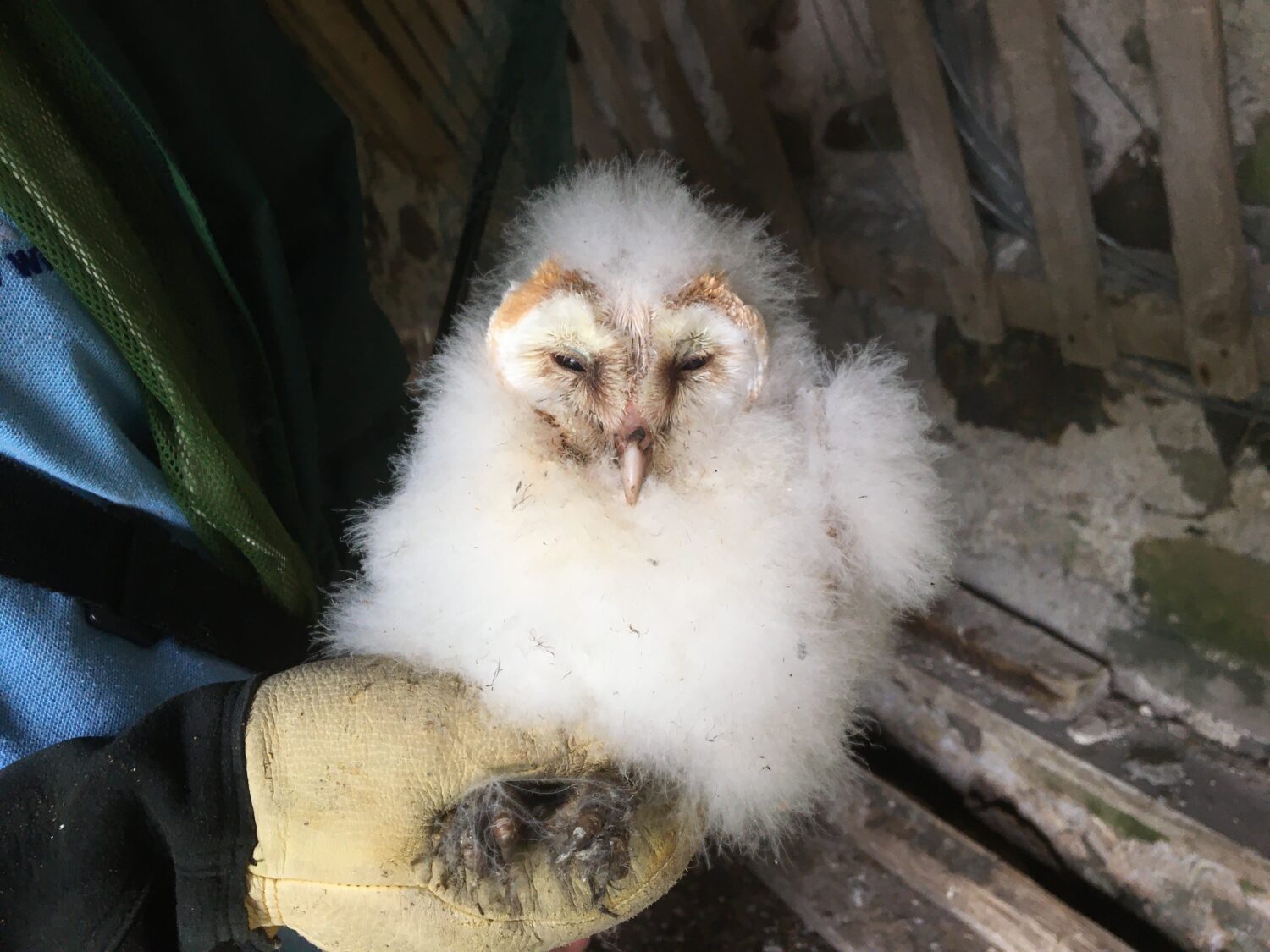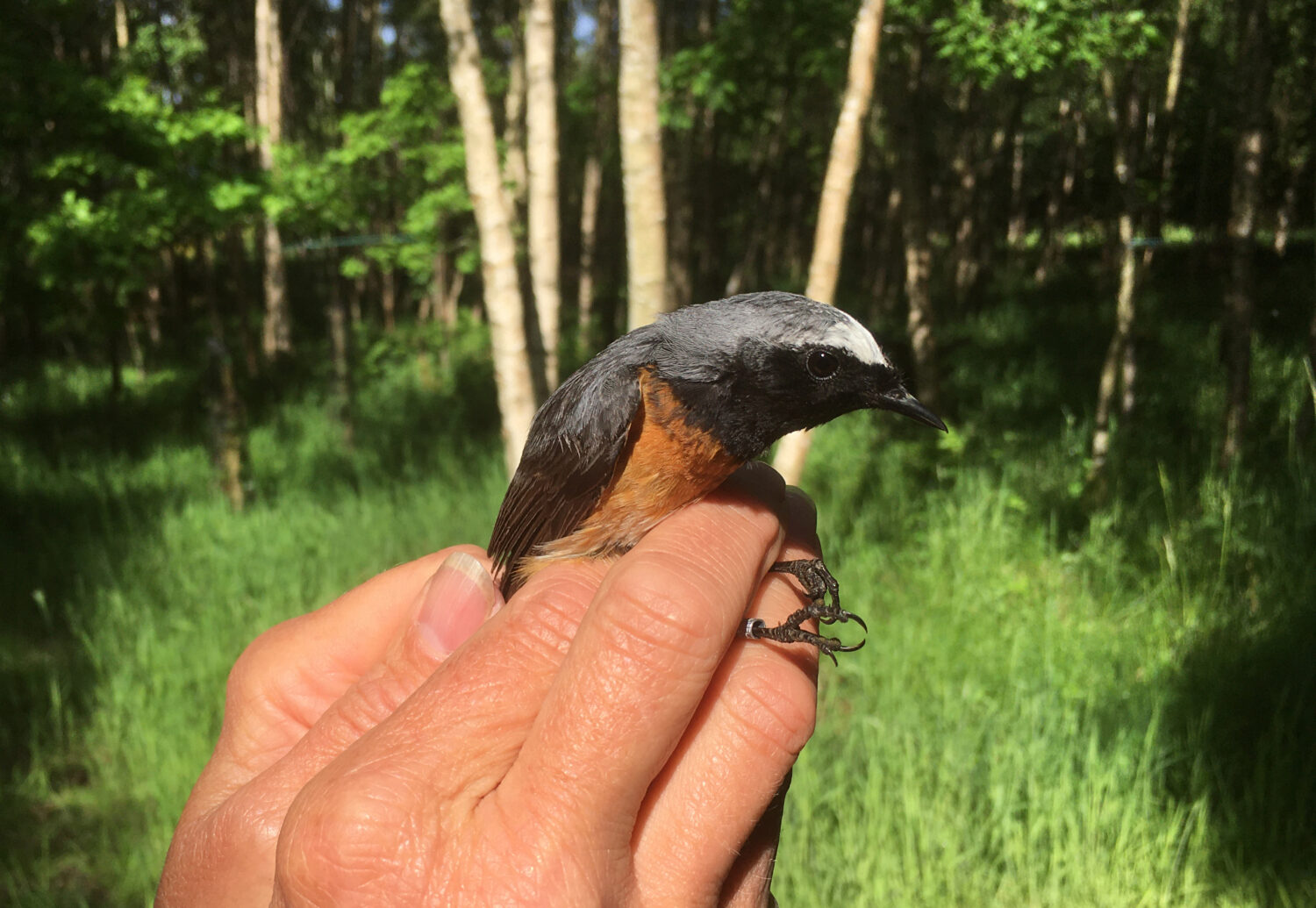North East ornithologist, Phil Hanmer, shares a new update summarising bird ringing across Northumberland throughout June
As already suspected this year is looking like an extremely poor one for nesting Barn Owls. The Spring weather, complete with snow, rain and cold, suppressed the food supply of small mammals and made it difficult for them to catch what was available. Barn Owls cannot hunt in the rain. After checking 100 odd nests sites we have only found 15 with eggs (and two of those are Kestrels). On my simple stats, that’s a 15% occupancy rate, whereas 30% would be more like average, and it was over 50% last year. Now there are another 20 sites where owls are present; sometimes it’s just a single bird, sometimes it’s a pair – so these may be late nesters – with young right into September. We will return to ring owlets in July but Alison and I had one nice surprise while checking a box in a farm hemmel north of Wooler on 24 June. This was the discovery of one healthy owlet of about 30 days old which we ringed; certainly the most advanced we know about but ringed around one month later than the first one last year! (see attached picture).

We have mostly finished Nest Recording the small passerine birds that use nest boxes (mostly tits) but this has also included a nest of Blackbirds that decided to use an open box at a Caravan Site – on a wall directly above the Wardens Office and Living quarters. They clearly felt safe being close to people that they trusted – and had a grandstand view of all the visitors coming into and out of the site! My new C ringer processed four young on the 5 June. Close by in a flimsy bit of hedge near the Assistant Wardens accommodation we also found a nest of Chaffinch that we were able to watch from the building stage right through to ringing five young. Its perhaps worth noting that Blackbirds, Thrushes and finches will continue to nest in gardens until August. It is most definitely illegal for a Farmer to cut a hedge until September, so please resist the temptation to go around undertaking hedge cutting exercises in your garden this time of year!
Last month I reported on finding a ‘drowned’ Chiffchaff nest of eggs close to the ground (as they always are); I am pleased to report finding another near Longhorsley where I was able to ring 6 pulli.
I don’t usually open up the Howick Ringing Station properly until the middle of July but at the request of a Professor from Newcastle University we put on a session on the 17 for Masters degree students as part of their Field Course. The idea was to add to their education about wild birds and introduce them to techniques of catching and processing birds that they might find useful in future studies and surveys. During the course of the morning, we captured 19 new birds and 3 retraps. The new birds included the ‘resident’ Coal, Blue and Great Tits; Robin, Dunnock; Blackbird, Siskin; Long Tailed Tit and a young Great Spotted Woodpecker. Several people thought this was a male – because it had a red head but it was a juvenile because all ‘this years’ hatched woodpeckers have a red ‘tonsure’ on their crown. It is only in a couple of months’ time when the bird moults that it loses this feature and the males develop a red patch on the back of their neck. Also in the new birds was an adult male Blackcap (warbler) which – unusually for a male – shows a Brood Patch because the male blackcap does do some incubating. There was also a pair of chiffchaffs which were useful because we had an opportunity to show how you can reliably distinguish them from Willow Warblers by checking the detailed ‘Wing Formula’. I always get amused at how many birdwatchers will look at one of these on the top of a tree and pronounce it is one or the other species based on little evidence. They really are difficult to tell apart unless of course, they sing.
I have mentioned I have a newly qualified ‘C’ Ringer who is now able to undertake ringing without my supervision; she has adopted a wood near Longframlington to start some ringing studies of her own. Setting up for the first time she had several excellent catches. One was an adult male Restart almost certainly breeding; that no-one really would guess nested in this wood. It’s not really the standard open mixed woodland with some oak etc. that they usually frequent. This species migrates of course to Africa in the winter. The other was two adult Yellowhammer (buntings) which you might expect to find in a flock on the edge of the wood in the winter but to find them this time of year was interesting. Further interesting was the fact that both looked ‘male’ based on the brightness of their ‘head’ plumage. However, closer study suggested one was a female with a very obvious Brood Patch and yes, some male birds do incubate (note the Blackcap mentioned above) but this bird had a very female shaped lower belly. A subsequent ringing session has found Marsh Tit in this wood; together with lots of Nuthatch and some Bullfinch.

Finally, I have to mention the Mute Swans at Howick that can be identified based on their coloured rings. The formerly resident female (Ring: ZJX) has been on the pool for a couple of weeks but on the 27 June there was trouble as a new pair had flown in. Scrutiny discovered that these were an unmarked female bird and the former resident male XJP. The problem was that XJP was not wanting to tolerate his former mate XJX sharing the pool and went so far as to chase her up the bank and out of the water. She subsequently came and asked us for some food. Her problem is that she has started moulting and probably will be unable to fly for a few weeks; so it’s difficult for her to avoid the aggressive male – who is a couple of Kg heavier than she is. As mentioned in a previous month she is also 18 years old; which explains why she seems to have stopped breeding.
In July we will hopefully ring some more young Barn Owls; some Kestrels and start at the Howick Ringing Station. If you think you have a Barn Owl nesting near you; please let me know.